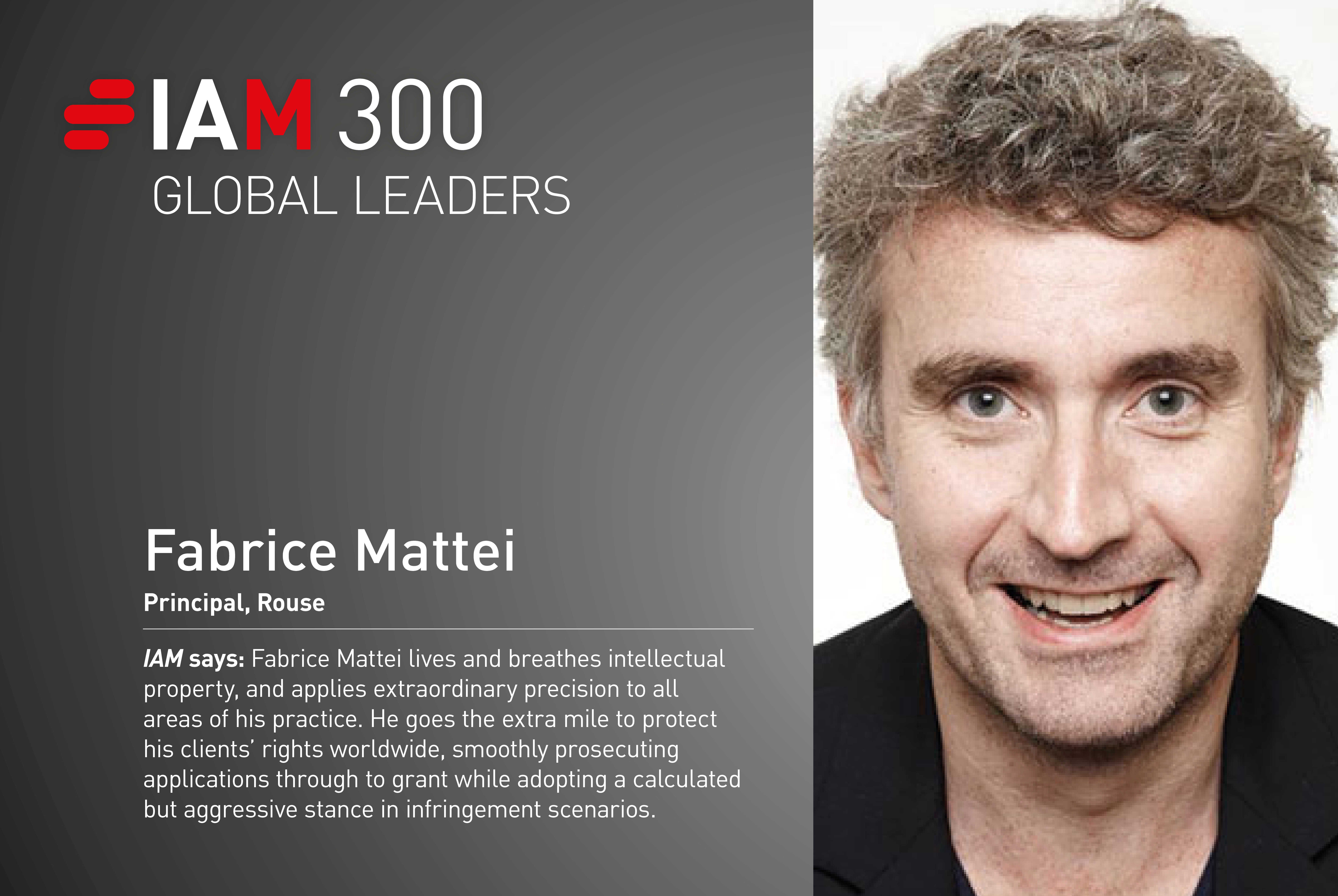Fabrice Mattei
As Rouse’s head of climate change, you developed the firm’s practice advising on adaptation and mitigation strategies. What does this approach look like?
Our approach involves integrating climate change and sustainable development goals into every facet of an IP strategy, from prosecution to litigation.
Intellectual property encompasses three main factors: its legal value (ie, uniqueness and protection), carbon value (ie, environmental impact, specifically carbon footprint) and abatement value (the incremental cost of reducing emissions associated with a technology or brand per metric ton of carbon dioxide). In an increasingly carbon-constrained economy, it is imperative to consider and carefully balance all three.
For example, a growing number of companies are opting to initiate legal climate change-related proceedings against competitors engaged in greenwashing activities as this has a more substantial impact than conventional IP infringement actions. In a greenwashing lawsuit, the competitor's reputation is significantly compromised, thereby resulting in a more powerful outcome.
With the introduction of the EU Green Pact, registering a patent or trademark in Europe no longer automatically grants exclusive rights to import and distribute any product within the European Union if the product exceeds a specified carbon impact threshold.
What are the biggest mistakes that rights holders make when prosecuting patents in Asia, and how can they avoid these?
Choosing countries to file patent applications in is not always straightforward. Patent owners should improve their assessment of countries where products or components can be manufactured, assembled and exported, as these three aspects often involve different jurisdictions (eg, semiconductors). Additionally, it is important to note that enforcement options vary widely between countries. For example, the Philippines provides patent holders with civil, criminal and administrative remedies, whereas Singapore offers only civil remedies.
Further, utility models are often seen as providing limited protection. However, in reality, they serve as robust tools for safeguarding and enforcing inventions in most Asian countries. Utility models typically do not necessitate the demonstration of an inventive step, rendering them less vulnerable to cancellation than standard patents, which can be challenged by citing prior art references.
As an IP strategist in Asia, what is your opinion on how the business landscape there has evolved over the years with respect to IP appreciation and adoption?
The past 10 years has seen a significant shift in the IP landscape. Initially, the focus was primarily on addressing infringement risks. However, this has evolved into a strong emphasis on innovation; companies have transitioned away from counterfeiting activities and have invested in R&D and made improvements to existing brands through ‘iminovation’. Today, we are witnessing a trend towards full innovation, with the emergence of local champions in China and South-East Asia. Climate innovation is playing a central role in shaping IP developments in more advanced nations, such as Japan. The Japanese Patent Office and companies like Panasonic are actively involved in this domain, driving innovations that prioritise environmental sustainability and climate-conscious technologies.
What recent decisions or legislative developments have had the biggest impact on IP strategy in Myanmar and Thailand in the past few years?
The implementation of Myanmar's long-awaited trademark law marks a significant milestone, and the establishment of the IP Office is equally pivotal. Thailand's accession to both the Patent Cooperation Treaty and Madrid Agreement has had a profound impact on IP legislation and examination practices, bringing it closer to international norms and standards. Nonetheless, there is still room for further improvements.
AI is the hot topic that everyone is talking about. What effect is AI having on your climate change work, and what are some of the biggest threats and opportunities you see in this space?
In our day-to-day practice, AI plays a critical role in addressing and mitigating the effects of climate change in various ways. We rely on AI especially in climate modelling and prediction. Primarily, algorithms can analyse historical climate data to make better short-term and long-term climate predictions. In relation to renewable energy, we use AI to optimise the operation of renewable energy sources, such as wind and solar farms, by forecasting energy production, managing grid integration and increasing energy efficiency. We have drafted various patents in this area. We have also patented several inventions in smart grids, where AI allows the balancing of energy supply and demand in real time, reducing energy waste and reliance on fossil fuels.
Fabrice Mattei
Principal
[email protected]
Fabrice Mattei is global head of Rouse's patent group and head of climate change. His practice covers patent prosecution and litigation in the Asia-Pacific region, and has been the lead patent attorney in major disputes in the region. He is also a consultant to the EPO on the harmonisation of South-East Asian patent examination rules and to WIPO on genetic resources and strategies for enhancing local innovation and branding in South-East Asia.
